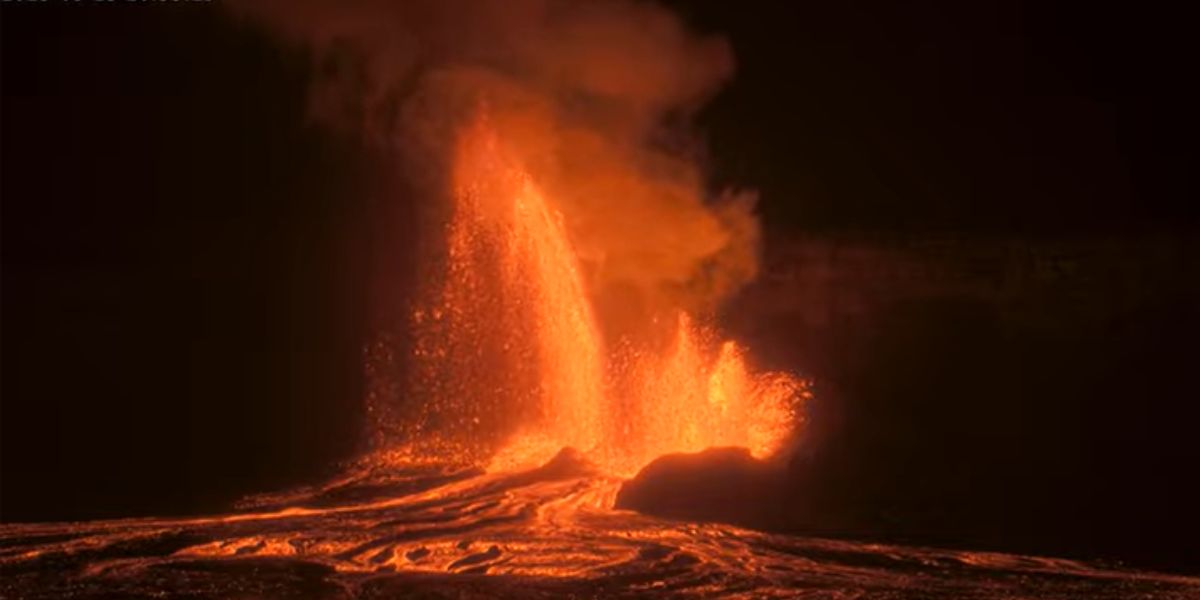Over the weekend, “lava fountaining” at the Kīlauea Volcano, which is situated on Hawaii Island’s southeast coast, reached heights of at least 1,000 feet.
Kīlauea is one of the most active volcanoes in the world, according to the United States Geological Survey (USGS). Since December 23, 2024, it has been erupting sporadically inside the summit caldera of Hawaiʻi Volcanoes National Park.
Late last week saw the start of the 23rd precursory activity episode, which included “low-level spattering and flames.” Around 11:30 a.m. on Saturday, Hawaiʻi Volcanoes National Park reported that lava overflows and little lava fountains began to emerge from the north vent.
“Sustained fountaining expected any time through the weekend,” the National Park Service for the Hawaiʻi Volcanoes tweeted.
According to the USGS, Klaus “is in a unique phase of activity in Halemaʻumaʻu, with numerous episodes of dual lava fountains since the eruption began.”
“Two eruptive vents are located in the southwest part of the caldera, referred to as the north and south vent, and they have been intermittently active, producing new lava flows over parts of Halemaʻumaʻu crater surface,” according to the USGS.

Lava fountains in the north vent were 1,000 feet high as of 5:20 p.m. local time on Sunday, while those in the south vent were 230 feet high.
Lava fountains were seen descending in height and then ceasing on USGS livestreams of the eruption site. Lava was still visible on the crater floor, and the vents continued to glow.
According to the USGS, the volcano’s final “fountaining phase” lasted for almost ten hours on May 16.
Other recent fountaining phases that lasted eight hours, 4.5 hours, and eight hours, respectively, occurred at Kīlauea on May 11, May 6, and May 2.
Read Also: Authorities Confirm 11 Injured in South Carolina Beach Area Shooting
The USGS noted that an inflationary tilt preceded a lava fountaining episode during the ongoing eruption due to pressure developing under the surface.
When lava fountaining starts, the magma’s internal pressure is released, causing a shift to a deflationary tilt. Although the USGS notes that the summit has shown little net change in pressurization since the eruption started on Dec. 23, 2024, the pattern of inflation and deflation with each recent lava fountain episode “creates a saw-tooth pattern in ground tilt records over the past several months,” the government agency says.



